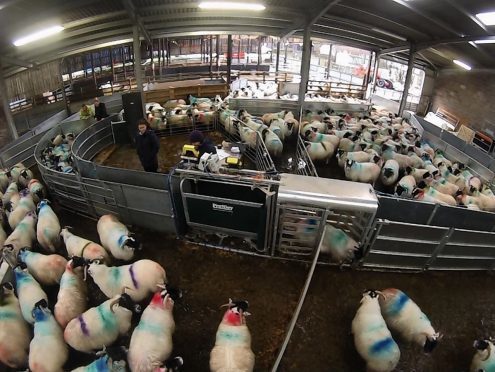The use of electronic identification (EID) tags has been mandatory in Scotland since 2010 to aid sheep traceability.
On SRUC’s Kirkton and Auchtertyre upland research farms we have assessed whether the electronic monitoring and logging of information on individual sheep and lambs could provide a powerful management tool.
Two management systems were tested to assess ewe weight and condition.
One used EID-based technology, linking the tags with an auto-drafting weighing crate, and the other used conventional means. The information gathered by both systems was used to make decisions on flock management, including the allocation of individuals to feeding groups, targeting health treatments, and selecting ewes for culling and lambs for slaughter or sale.
We found that EID-based technology helped greatly when taking decisions on feeding, worming, drawing animals for slaughter and selection for breeding. It also saved time and labour, reduced handling stress on the animals, reduced paperwork and increased the ease and accuracy of performance data recording.
By combining our weigh crate and auto-drafter we can record and automatically sort up to 500 animals per hour. Over the whole year, this can lead to labour savings of 30-40%. On our farms, the average differences in net margin between the two systems were found to be around £4 a ewe, meaning that for a flock of 900 ewes it would take only three years to recover the cost of our EID-based equipment.
We handle our sheep much more often than other hill sheep farmers and so use a high specification auto-drafter and weigh crate. However, there are cheaper pieces of kit on the market that would do the job just as well for smaller flocks or flocks being handled less often.
Whatever the cost of investment, our research has shown that the use of such equipment is extremely useful when making management decisions to improve the health, welfare and performance of the flock.
This research was primarily funded from the Scottish Government’s Rural & Environment Science & Analytical Services Division (RESAS) Strategic Research Programme.










